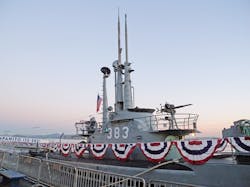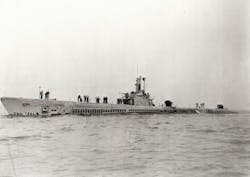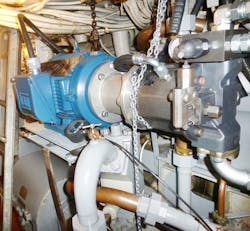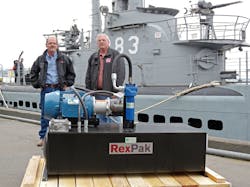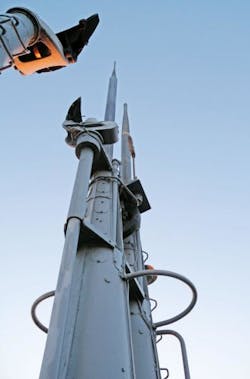Previously, hydraulic power came from the boat’s original “air-over-hydraulics” unit: high-pressure air is pumped into a hydraulic accumulator, generating the necessary oil pressure to operate the equipment. This air-over-hydraulics system presented several headaches. For one, it took up to a full day to get the high-pressure air system running. Safety considerations demanded trained operators, usually assisted by naval veterans experienced with pneumatic-hydraulic systems. Consequently, hydraulics couldn’t be used often. And because volunteers perform virtually all the work on the Pampanito, maintaining the pneumatic-hydraulic system was problematic.
Engineers at Hydraulic Controls, Emeryville, Calif., a distributor for Bosch Rexroth, Charlotte, N. C., sized up the hydraulic requirements and decided on a RexPak hydraulic power unit. Designed for a variety of equipment that requires hydraulic power rated up to 75 hp, 65-gpm flow, and 3,200-psi operating pressure, each RexPak system is built from a core set of components: motor, pump, fluid reservoir, and associated control valves. Although every RexPak is tailored to a specific application, units can be designed, assembled, and delivered in as little as six weeks.
Aiding this process was the RexPak Design Engine, an online configuration tool that captures the data needed to select and size the power-unit’s components. The software queried designers on details such as the weight of the bow planes and the periscope, the volume of hydraulic fluid that accumulates from the forward engine room, the distances between the power unit and the equipment it operates, and so on.
The power unit easily breaks down into its constituent parts, so it can be carried piece by piece below deck, then reassembled. Other than some special flanges and mounting brackets, the modular RexPak readily adapts to the boat’s existing hydraulic piping and controls — though much of it is decades old. This means the boat’s original controls, on the bridge and in the engine and torpedo rooms, can be used to operate the equipment.
Compared to the high-pressure air compressor, the RexPak consumes less power and is easier to operate. So volunteers, not just experienced veterans, can run it and, consequently, demonstrate the periscope and other systems more often.
The time and effort for the Pampanito’s hydraulic restoration was all donated — as was the RexPak unit itself: Bosch Rexroth provided the system at cost to Hydraulic Controls, which donated the system to the association.
Resources:
About the Author
Kenneth Korane
Ken Korane holds a B.S. Mechanical Engineering from The Ohio State University. In addition to serving as an editor at Machine Design until August 2015, his prior work experience includes product engineer at Parker Hannifin Corp. and mechanical design engineer at Euclid Inc.
